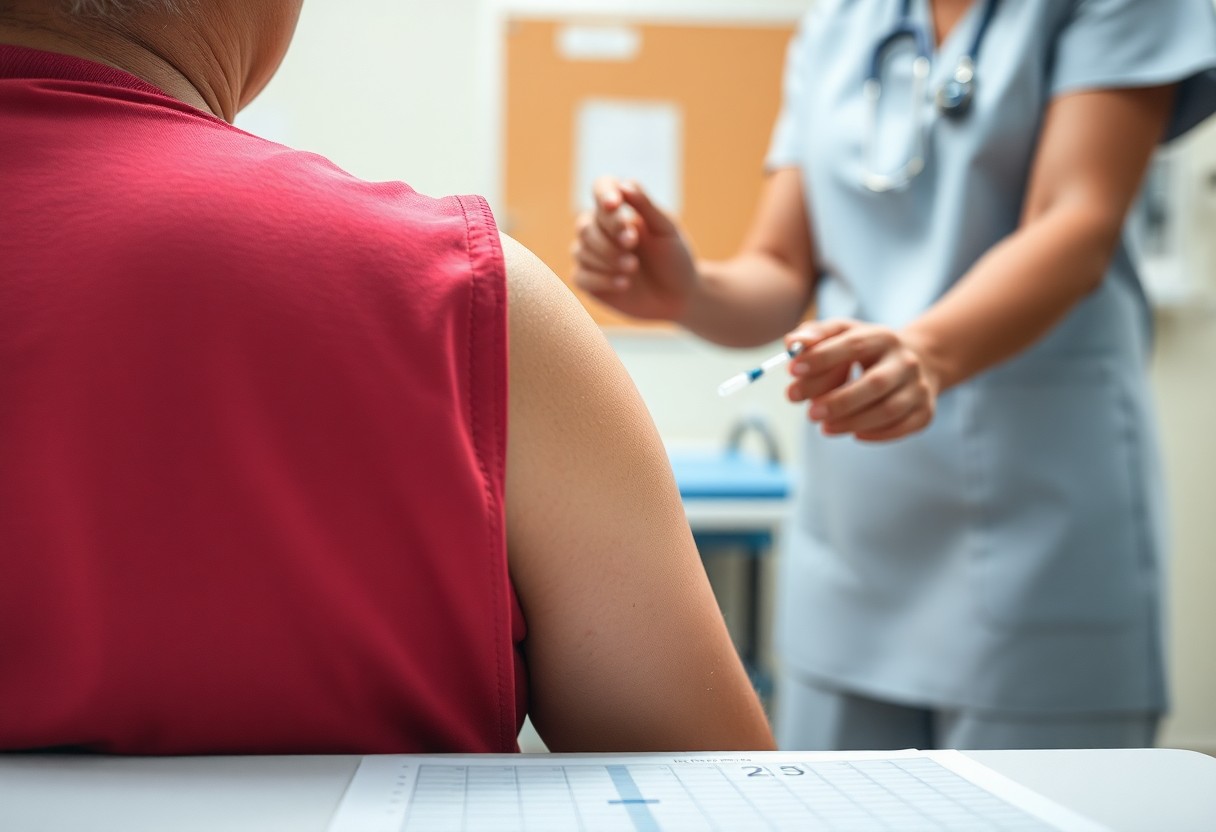SIRVA, or Shoulder Injury Related to Vaccine Administration, is a significant yet often overlooked condition that can arise from improper vaccination techniques. If you receive a vaccine and experience persistent shoulder pain or limited mobility, it’s necessary to recognize this as a potential injury resulting from the shot. This post explores why increased awareness is vital not only for those affected but also for healthcare providers. By understanding SIRVA, you can advocate for better vaccine administration practices and seek appropriate treatment if you find yourself facing this debilitating injury.

Understanding SIRVA
To fully grasp SIRVA, or Shoulder Injury Related to Vaccine Administration, it is important to recognize its implications. This injury occurs when a vaccine is improperly administered, often leading to pain and functional impairment in the shoulder area. Understanding the mechanics and outcomes of SIRVA can help you advocate for better vaccination practices and take necessary precautions to avoid it.
Definition of SIRVA
Among the various vaccine-related complications, SIRVA stands out as a specific shoulder injury resulting from inaccurate needle placement during vaccination. This can lead to inflammation, pain, and restricted mobility, significantly impacting your daily life if left unaddressed.
Causes and Risk Factors
Understanding the causes and risk factors associated with SIRVA is vital for prevention. Common causes include:
- Incorrect needle insertion technique leading to injury.
- Inappropriate vaccine site selection.
- Patient anatomy which might predispose them to injury.
After identifying these factors, you can take steps to mitigate the risk of SIRVA during your next vaccination.
And as you learn more about SIRVA, consider how certain practices can elevate your risk. Evaluating variables such as:
- Vaccine type and its effective administration.
- Vaccination location, ensuring proper techniques are used.
- Healthcare provider training, which can significantly impact outcomes.
After exploring these risk factors, you will be better equipped to engage in informed discussions and promote safe vaccination practices.
Symptoms of SIRVA
There’s a range of symptoms you may experience if you develop SIRVA. These symptoms can affect your daily activities and overall quality of life, often emerging within days or weeks following a vaccination. Common complaints include persistent shoulder pain, limited range of motion, swelling, and tenderness at the injection site. If you notice these issues after a vaccination, it is vital to seek medical advice promptly.
Common Symptoms
One of the most prevalent symptoms of SIRVA is shoulder pain that feels sharper or more intense than typical post-vaccination soreness. You might also experience stiffness, swelling, or even a sensation of weakness in the affected arm. Keep an eye on how these symptoms evolve, as they can indicate a more serious condition that requires attention.
Diagnosing SIRVA
By diagnosing SIRVA, healthcare professionals consider your medical history, recent vaccinations, and specific symptoms. Your doctor may perform a physical examination and potentially recommend imaging tests to assess the extent of any injuries.
Due to the overlapping symptoms with other shoulder injuries, accurate diagnosis is vital for effective treatment. Healthcare providers typically rely on a combination of your vaccination history and physical examination findings to confirm SIRVA. Seek help sooner rather than later, as early intervention can lead to better recovery outcomes. A clear understanding of your symptoms and their correlation with your vaccination can significantly improve the diagnostic process.
Treatment Options
The journey toward recovery from SIRVA often involves various treatment options tailored to your specific symptoms and needs. Understanding these options can empower you to make informed decisions about your care, whether through medical interventions, physical therapy, or both. By exploring these paths, you can work toward regaining your health and quality of life.
Medical Interventions
Alongside physical therapy, medical interventions can play a significant role in alleviating your SIRVA symptoms. Treatments may include anti-inflammatory medications, corticosteroid injections, or in some cases, surgical options. Collaborating closely with your healthcare provider will help determine the most effective approach for your individual situation.
Physical Therapy and Rehabilitation
Around the world of rehabilitation, physical therapy stands out as an important component in addressing SIRVA. Your therapist will work with you to develop a personalized program that focuses on improving your range of motion, rebuilding strength, and alleviating pain. Regular sessions will help you progress and can significantly influence your recovery timeline.
And, by engaging in consistent physical therapy, you can enhance your recovery by focusing on targeted exercises that promote flexibility and strength. Therapists may incorporate modalities like heat, ice, or ultrasound to reduce discomfort and expedite healing. Additionally, you’ll learn important strategies for preventing future injuries, empowering you to take control of your health and ensure a safer return to daily activities. The ongoing support and guidance from your physical therapist can be pivotal in navigating your recovery journey effectively.
Preventive Measures
Keep in mind that preventing SIRVA largely involves attention to technique during vaccinations and a proactive approach to understanding the risks associated with shoulder injuries. Ensuring that healthcare providers are trained in appropriate injection methods and understanding your body’s anatomy can significantly reduce the risk of developing this unwanted complication.
Proper Vaccination Techniques
Among the various strategies to prevent SIRVA, the proper technique during vaccinations is paramount. Healthcare professionals should adhere to established guidelines, such as using the correct needle size and injection site, to minimize the risk of shoulder injuries. Additionally, positioning you correctly during the vaccination process can help ensure that the injection is delivered safely.
Patient Education and Awareness
About SIRVA, it is crucial for you to be informed and aware of the signs and symptoms associated with this injury. Understanding that SIRVA can arise from improper vaccination techniques empowers you to advocate for safe practices in your healthcare. By knowing what to look for and asking the right questions, you can contribute to a safer vaccination experience.
It is vital that you have open discussions with your healthcare provider regarding your vaccination. Inquire about their experience and the technique they use when administering the shot. This knowledge can help ensure that you receive optimal care while minimizing the risk of SIRVA. Being aware of your own body mechanics and communicating any discomfort or concerns during the vaccination process can also play an important role in preventing injury. Educating yourself not only helps protect your health but also supports overall improvements in vaccination practices.
Case Studies and Statistics
Many studies and statistics highlight the impact of SIRVA on individuals. Here are some key findings:
- Research indicates that about 1 in 1,000 vaccine recipients experience SIRVA.
- A study found that up to 85% of patients with SIRVA report significant improvement in symptoms with appropriate treatment.
- Data shows the average recovery time for SIRVA patients ranges from 6 months to 2 years, depending on severity.
Incidence Rates
By examining various studies, you may find that the incidence rates for SIRVA are rising due to increased vaccination efforts. Approximately 0.5% to 2% of vaccinations reported lead to SIRVA, highlighting a pressing need for awareness and education around this condition.
Real-Life Experiences of Affected Individuals
Behind every statistic are real individuals facing the challenges of SIRVA. You may learn from their stories that symptoms like persistent pain and limited mobility significantly affect daily life and well-being.
Individuals who have experienced SIRVA often share their journeys of frustration and hope. You’re likely to encounter stories of people who faced overwhelming pain and sought multiple treatments. Some achieved remarkable recovery, while others still battle their symptoms. The emotional toll is profound, as you find them juggling physical limitations and everyday tasks. Importantly, you’ll see that consistent care and support can lead to improved outcomes, making awareness of SIRVA even more necessary for those at risk.
The Importance of Advocacy
All individuals affected by SIRVA deserve a collective voice advocating for recognition, support, and treatment. Advocacy plays a significant role in raising awareness around this injury, pushing for better understanding and resources within healthcare systems. This can empower you to seek proper medical attention and ensure that SIRVA is acknowledged as a legitimate concern, leading to improved outcomes for all affected.
Raising Awareness in Healthcare
Beside the importance of personal advocacy, raising awareness within healthcare settings is vital. You may encounter healthcare professionals who are unfamiliar with SIRVA, which can delay your diagnosis and treatment. Advocating for education and training among providers can set a foundation for more effective care and support.
Community Support and Resources
Beside personal advocacy, connecting with a community can provide the emotional and informational support you need. Engaging with local and online support groups can help you share experiences and gain insights from others who understand your journey.
Plus, many organizations and online platforms offer resources dedicated to SIRVA, allowing you to access information about treatment options, legal rights, and coping strategies. Leveraging these community connections can lead to empowerment and a sense of belonging, helping you navigate your injury with greater confidence. By participating in awareness campaigns and local events, you also contribute to a larger movement that can lead to enhanced recognition and support for SIRVA victims everywhere.
Conclusion
Taking this into account, understanding SIRVA is imperative for you and those around you. Increased awareness not only empowers you to recognize symptoms early but also helps foster conversations about safe vaccination practices. By educating yourself and others, you can contribute to a culture that prioritizes informed health decisions, ensuring that individuals experiencing this type of injury receive the support and care they need. Together, we can enhance recognition of SIRVA, improving outcomes for affected individuals.















